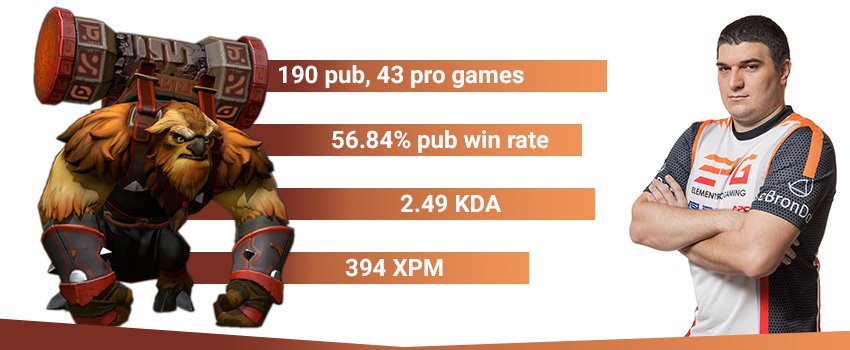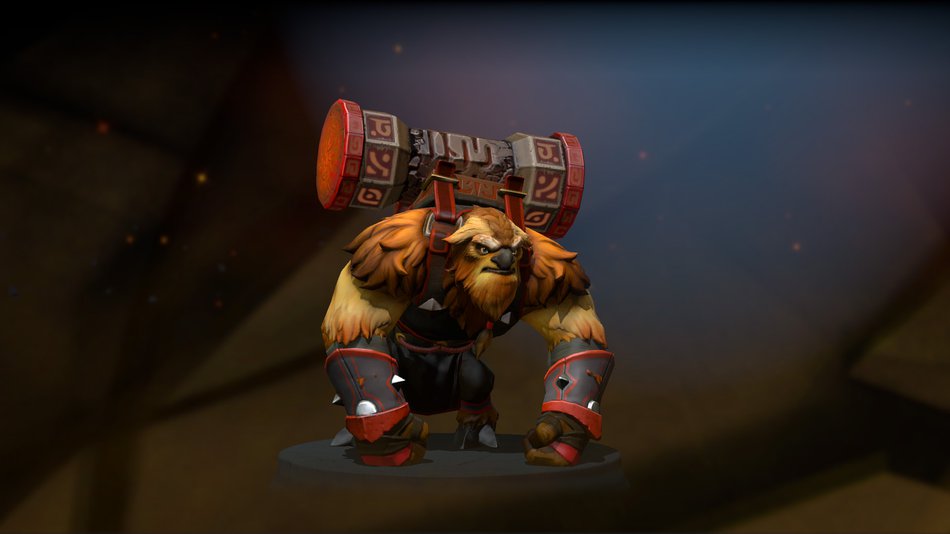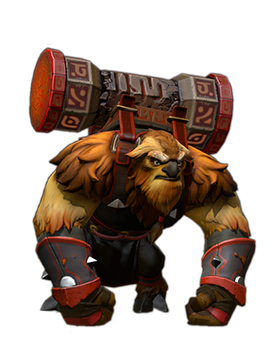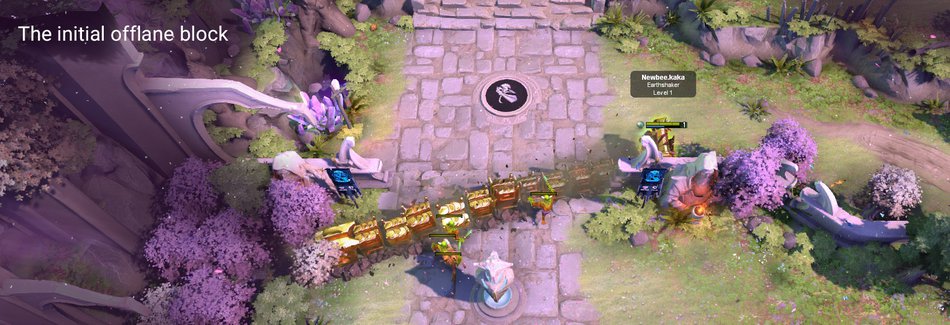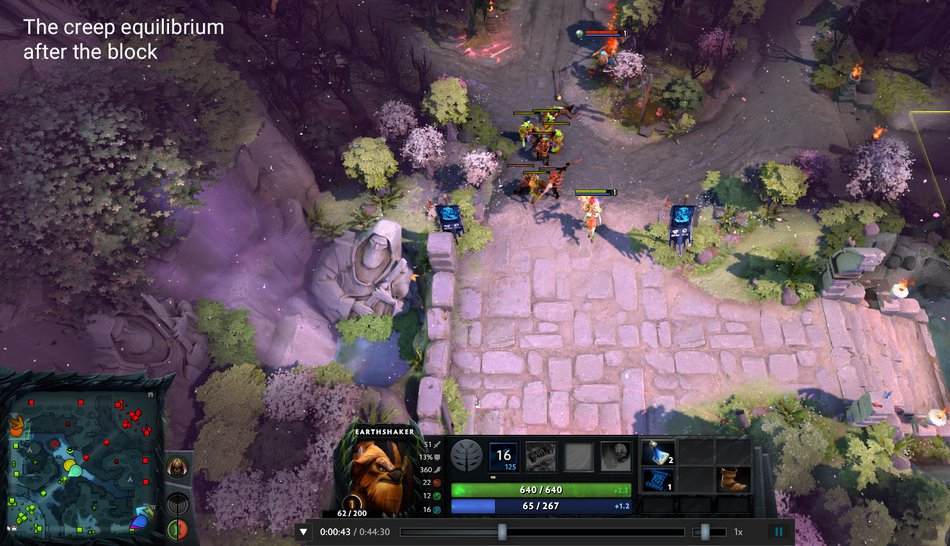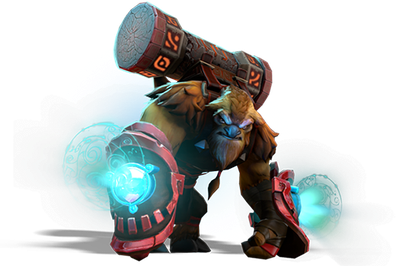Mechanics:
- Fissure doesn’t block flying units (Firefly, Hawk, Courier, etc.) as well as units with free pathing (Spin Web, Spectral Dagger, etc.)
- Creeps will not try to walk around the Fissure, but will instead wait for it to disappear
- Hitting units with Fissure in the center will slightly shove them to the side
Fissure has three aspects: stunning, blocking and damaging. To get the most value out of the spell you need to utilize all three at the same time in fights. The trickiest and sometimes most important part is blocking: Fissure is a spell you need to use carefully because with the blocking aspect you could actually hinder your allies rather than help them out – you need to make sure your enemies are the ones getting blocked rather than your allies.
Initiation: Fissure is a great initiation tool especially when you are standing outside of enemy vision. It has a long casting animation, but afterward it stuns instantly (no projectile). Consequently, if you are in the fog your opponents wouldn’t be able to react and would get stunned, which should give you or your teammates an opportunity to jump on the target. Moreover, because of the AoE of the spell, you can start fights with a multiple-hero Fissure stun.
Blocking heroes: Creating a physical barrier could be very powerful in ganks or fights because it will restrict the free movement of your enemies.
First, you could use Fissure for ganks in the early game - if you cut the shortest escape route of an enemy he/she will be much more vulnerable (i.e. preventing the target from running back towards his/her tower). The time needed to walk around the ridge could give your team enough time to secure the kill. To do this efficiently you need to make sure that the far end of the fissure connects with other impassible objects like trees or high ground cliffs. This way the only option of your target would be to run towards you or at some other random direction from which it is difficult to disengage.
In group fights a well-placed fissure could create problems for the enemy team:
- If you are losing the fight, you should use Fissure to disengage;
- If you are winning the fight, you should use Fissure to cut your opponents’ retreat path;
- If the enemy team has melee carries, you should use Fissure to stop them from reaching their targets.
Blocking creep waves: You can use Fissure to block your lane creeps from moving forward for the 8-second duration of the ridge. To do this simply cast it in front of your own creep wave across their path in the lane. This is a useful trick for controlling the creep equilibrium especially in the offlane at the beginning of the game – the waves will meet much closer to your tower.
Later on in the game, you can use the same technique to block the enemy creep wave – this way you will delay an incoming push for 8 seconds. This is most commonly used when the enemy team wants to push your base because it is very easy to block the ramp and disallow the enemy team to reach the T3 tower. Nevertheless, the trick could be used for defending other towers as well - creeps wait for the Fissure to time out rather than walk around it and your opponents are likely to wait for their wave to tank the tower.
Predict movement of target: Even though Fissure takes effect instantly when cast, the actual casting animation is quite long. This means that you need to take it into account when aiming – click the ground where the target would be after 0.7 seconds.
Use both stun and blocking: Ideally, you want to stun/damage AND block the target. To do this you need to make sure the Fissure hits close enough to the enemy hero but on the correct side. If you simply click your target you could end up blocking him on the wrong side which will make it much easier for him to disengage. Because of this, the best practice is to target the ground next to your target on the side which you want to block.
If you care only about the stun aspect of the spell (e.g. your allies will follow-up with Blink and chain stuns), the best practice is to click your target to make sure you don’t miss the spell.


